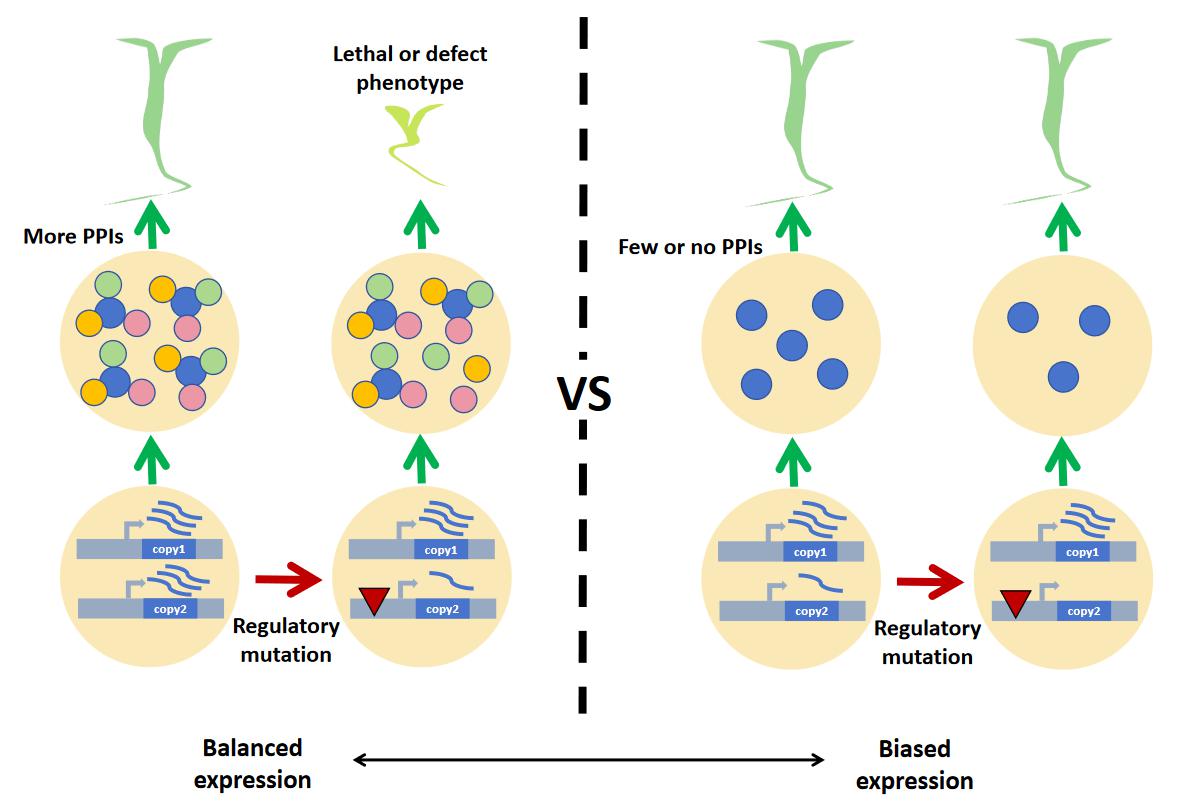Key Factor Influences Expression Divergence of Duplicate Genes from Ancient Polyploidy Events in Plants
2024-09-02
Recently, research teams from Wuhan Botanical Garden of the Chinese Academy of Sciences (China) and Ghent University (Belgium) published an article in The Plant Cell titled "Dosage Sensitivity Shapes Balanced Expression and Gene Longevity of Homoeologs after Whole-Genome Duplications in Angiosperms", providing insights into genome evolution after whole-genome duplications in plants.
Whole-genome duplication (WGD, or polyploidy) is a common and frequent occurrence in plants, providing raw genetic material for evolution. Homoeologs (duplicate genes from a WGD) often diverge in expression levels, while some still maintain similar (balanced) expression levels between the two copies even after tens of millions of years. Dosage-balance constraints, which ensure the proper stoichiometry of protein complex subunits, play a crucial role in retaining both copies of homoeologs from the protein complex after a WGD.
Do dosage balance constraints also play an important role in shaping similar expression levels for the homoeologous gene copies after ancient WGDs, as the stoichiometry of interacting proteins is maintained by ensuring the expression of the proper amounts of gene products? (see Figure 1)
By analyzing homoeologs in Nymphaea, Nelumbo, and Acorus, which each underwent a single WGD since the origin of angiosperms, Prof. SHI Tao, Prof. Yves Van de Peer and other members observed convergent expression balance/bias between homoeologous gene copies following independent WGD events.
Homoeologs with balanced expression levels indeed exhibit characteristics indicative of stronger selective pressures related to dosage balance, and their putative orthologs are more likely to be retained after WGDs in other angiosperm lineages. Further, homoeologous genes with similar expression levels exhibit relatively less regulatory differentiation between species of Nelumbo, suggesting that dosage balance constraints also play a role in recent gene expression evolution. Additionally, the lower-expression copy of homoeologs is more prone to becoming nonfunctional.
Understanding the expression divergence and fate of homoeologs that have undergone multiple WGDs is a more complex task that necessitates further analysis of evolutionarily close taxa with varying numbers of WGD events.

Figure 1. Model depicting how balanced expression of duplicate genes from a whole-genome duplication is associated with dosage-balance contraints (Image by Prof. SHI et al.)